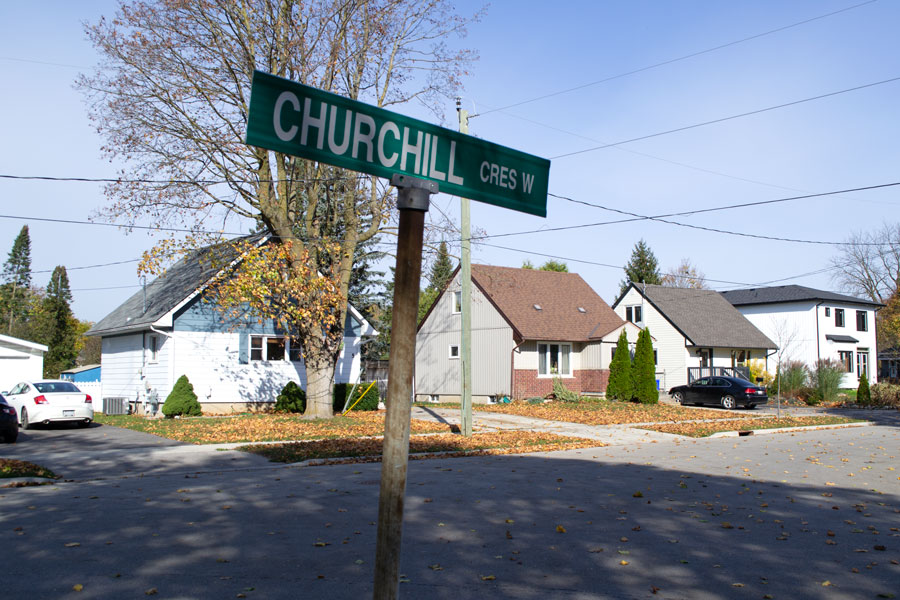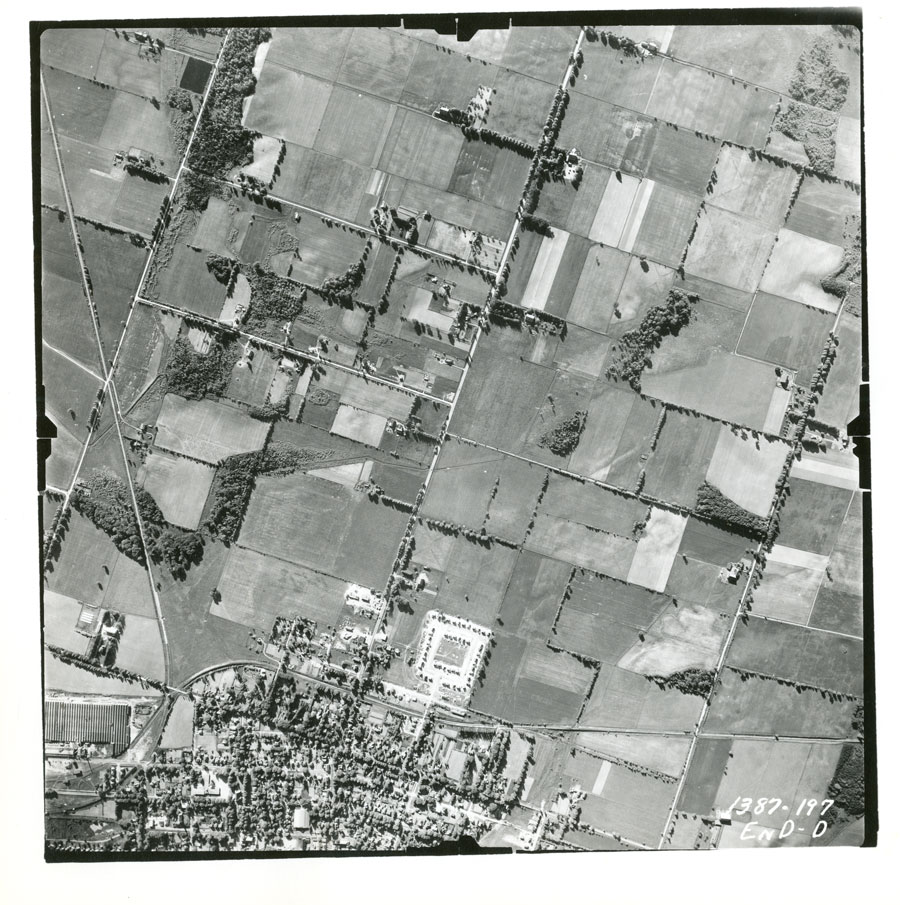FERGUS – Tucked away in the north end of Fergus, now surrounded by big box stores and fast food restaurants, is a neighbourhood that’s unique to Centre Wellington but common across the country.
It tells the story of the end of the Second World War and the federal government’s initiative to provide housing for returning war veterans – and it is an important chapter in the growth of Fergus.
It’s worth recognizing the story in the days leading up to Remembrance Day.
While the urban landscape has all but swallowed it up over the past 75 years, the neighbourhood of Churchill Crescent in Fergus remains relatively unchanged.
Churchill Crescent and Edinburgh Street surround Webster Park and contain 60 Victory homes. It’s for this reason that Churchill Crescent is one of 18 cultural heritage landscapes identified by Centre Wellington.
Called variously wartime homes, war veteran homes and Victory homes, these approximately 1,000 square foot dwellings – square on the bottom, triangle on top – are dotted across the country in neighbourhoods with meandering streets, neighbourhood parks, and plots of land large enough to have vegetable gardens.
“The focus was on affordable,” said Laura Wickett, a specialist with ASI, the heritage consultant hired by the township to research the cultural heritage landscapes.
“They were compact, simple and had standard designs and they were prefabricated and assembled on site – all to keep construction costs down.”
The story of wartime housing goes back to 1941, when the federal government formed the federal crown corporation War Housing Ltd. It was tasked with building rental housing for workers in industrial parts of cities that were supplying the war effort.
Affordable homes
The homes were basic, 1.5 stories and they were prefabricated in shops and assembled on site to keep costs down.
Wartime housing was intended to be temporary. Most of them were built on concrete blocks – no basements – and could be disassembled as quickly as they were put together.
In 1947 the government shifted the priority to provide housing for returning veterans. They used the same house plans – a diminutive Cape Cod style – but changed the site criteria.
Now they were building permanent homes for returning war veterans on land located on the fringes of most cities and towns.
Familiar homes
The homes are familiar because you see them everywhere. Between 1941 and 1947, 46,000 wartime homes were built across Canada.
Wartime Housing Ltd. morphed into the Canadian Mortgage and Housing Corporation (CMHC) in 1947 and the agency changed its focus from providing rental homes to allowing them to be purchased.
The homes in Fergus were built before 1954 on farmland north of the Canadian Pacific Railway line, which was still operating at the time.
And the streets – Churchill Crescent and Edinburgh Avenue – form a square around Webster Park.
A few Victory homes can also be found on Forfar Street and James Street nearby.
“It was the largest residential neighbourhood north of the railway line at the time of its construction,” according to the township’s Cultural Heritage Landscape Study and Inventory, Vol. 3.
“This neighbourhood only connected to downtown Fergus at Forfar Street and St. David Street North, which crossed the railway line.”
Neighbourhood unchanged
Wickett said the neighbourhood has historic and cultural significance because it is largely intact.
“There’s a cohesive quality within the neighbourhood and this neighbourhood has not been altered too much,” she said. “That’s rare to see.”
These homes were built between 1948 and 1954, meaning some of them will turn 75 this year.
Wickett said during community consultation, it was evident the Victory homes have value to the community, both as an example of affordable housing and as a model of how small neighbourhood parks add to a sense of connectedness and community.
“The idea of them being affordable is something we value now in a different way,” she said. “And having green space in the middle of housing was a new idea at the time that we also value.”
The Victory homes on Churchill Crescent are one of 18 cultural heritage landscapes (CHL) identified by the township.

Victory homes are dotted across the county – an initiative by the federal government to house veterans returning from the Second World War and help them return to regular life. The Churchill Crescent neighbourhood in Fergus has some 60 Victory homes and it is one of 18 cultural heritage landscapes identified in the township. Photo by Joanne Shuttleworth
Cultural heritage landscape
Council endorsed the CHLs in 2021, but there’s a long way to go before these neighbourhoods and natural landscapes receive formal protection.
Manager of planning services for Centre Wellington Mariana Iglesias, said council endorsed the CHLs in 2021 and since then staff have been working on an official plan amendment to recognize them in mapping and language.
After that, further study will be done on each CHL and planning tools will be identified that could help to add protections to these areas.
“We’re waiting for the province to release its planning policy statement to see if it changes. That will tell us the range of tools we could use,” Iglesias said.
“We’ve done the first big step and that’s identifying the areas and the (planning) tools. I expect this to roll out over the next 10 years.”
The Cultural Heritage Landscape Study won an Award of Merit from the Canadian Association of Heritage Professionals this month.
The award is shared jointly between Centre Wellington and ASI.
Iglesias said Churchill Crescent is a unique area.
“The very consistent style and approach remain largely unchanged,” she said.
On a blustery fall day, it’s easy to imagine the past, with young families moving onto the street when the homes were brand new and kids playing road hockey on the street or baseball in the park, because it’s still happening there.
And to be constructed at a time when Fergus was incorporated as a town in 1953 adds to the story of a growing, prosperous community.



